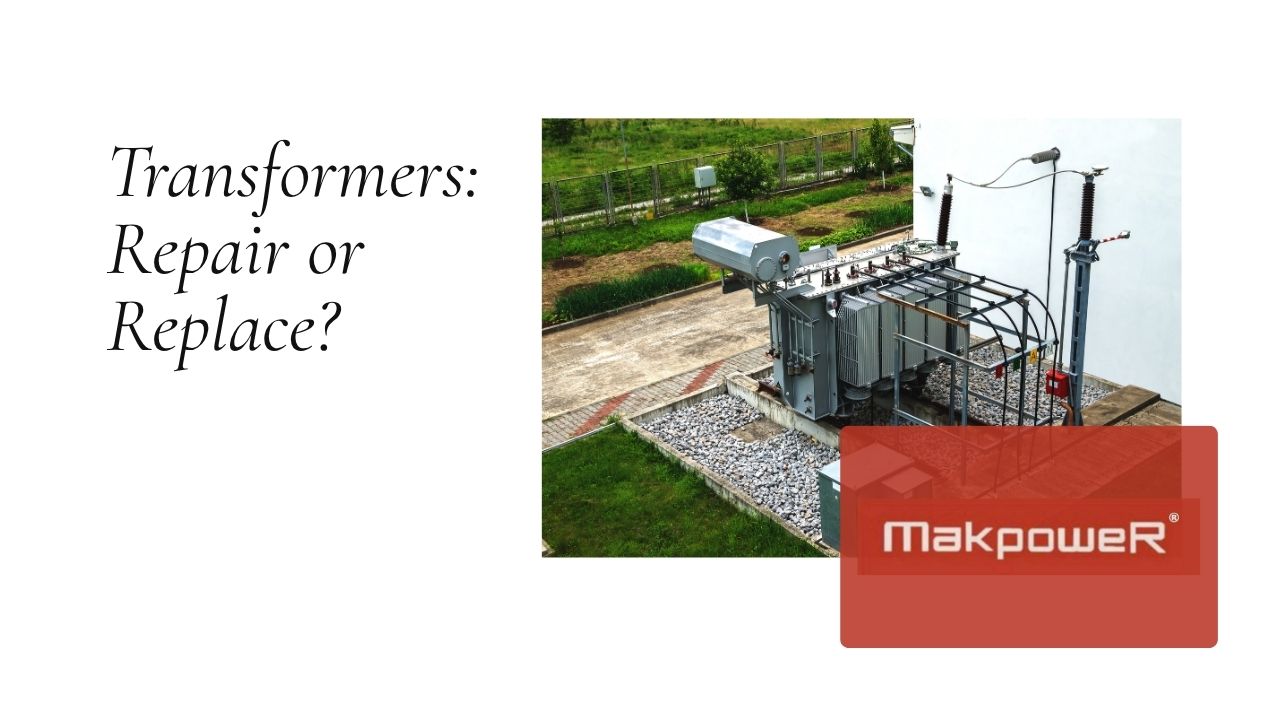

Transformers don’t wear out overnight. They slow down. They heat up more than they used to. Or they hum a little louder than last month. Something feels different, and your team starts wondering what to do next.
That’s where most decisions begin—not with a failure, but with a shift.
Both repair and replacement have their place. But choosing the right one depends on more than just cost or age.
It comes down to how the transformer is performing now, what you expect it to handle later, and how much risk you’re prepared to carry in between.
When faults keep coming back, even small ones start to matter more. Recurrent oil leaks, insulation breakdowns, or tap changer issues may look manageable on their own.
But if you’re seeing a pattern, the core structure could be under strain.
Some teams rely on repairs just to get through a season. That works—until the interruptions start affecting operations.
If a unit has needed three or more significant interventions in a short span, it may be showing signs of internal fatigue.
At that point, a deeper inspection often points toward replacement being the more sustainable option.
Repairing a transformer that’s undersized for the job rarely improves anything. It may come back online, but it will keep running hot or inefficient.
In growing plants or shifting processes, transformers face loads they weren’t built to carry.
You’ll want to review how the connected load has changed over the years. A process line upgrade, new motor banks, or added furnace capacity can quietly push the transformer beyond its comfort zone.
In that case, replacement lets you re-spec the unit to match the current draw and allow some headroom for the future. A trusted transformer manufacturer in India can help assess your needs and deliver a solution that’s built for today’s demand—and tomorrow’s growth.
One set of test results might suggest a simple fix. But if you line up test data over time—oil quality, dielectric strength, winding resistance—you start to see the direction things are heading.
That’s where trend analysis becomes useful. A slow drop in insulation resistance, for example, might take years to reach failure.
But it tells you the clock is ticking. If multiple values are drifting the same way, that often signals deeper wear. Some teams catch this early and plan a rebuild with time on their side. Others find out during a breakdown.
Repair usually feels faster. And in many cases, it is. But the real question is whether the repair actually gives you enough service life to justify another stop.
If the unit feeds critical operations or sits in a tight window for replacement access, the speed advantage of repair becomes less reliable.
Many plants prefer to plan a replacement during a scheduled shutdown instead of facing an unplanned one.
This approach allows you to align installation with minimal disruption while avoiding rushed decisions later.
Upfront cost often tilts the conversation toward repair. But when you stack in the cost of inefficiencies, lost load capacity, recurring service, and eventual downtime, the difference can shrink quickly.
It helps to model the lifecycle cost of both options. Some repairs extend life by five years. Others buy you just six months.
Meanwhile, a replacement may cost more now but reduce your power losses and maintenance expenses year after year.
A transformer should match the pace and shape of your plant’s future. If your facility is expanding, adding new lines, or shifting to heavier-duty cycles, your current transformer might only be holding on temporarily.
At Makpower, we’ve worked with plants that needed one last overhaul before a planned equipment upgrade—and others that benefited from a fresh unit designed around their new load shape.
The best-fit answer usually depends on how you balance near-term flexibility with long-term reliability.
There’s rarely one clear trigger that says “repair” or “replace.” The decision grows from patterns.
Some transformers show steady wear but can be restored for years of use. Others begin to fall out of sync with their environment, no matter how often they’re fixed.
At Makpower, we’ve seen both paths work—when they’re chosen with the full picture in view. We approach every transformer decision not as a repair job or a product swap, but as part of how your system grows and stays stable.